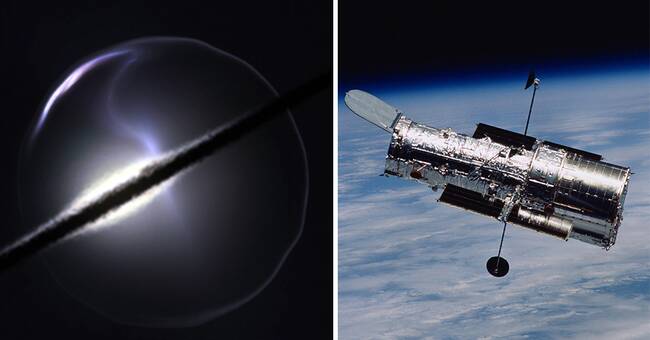A galaxy cluster can consist of up to a thousand galaxies, which in turn consist of millions of stars.
The entire galaxy cluster is embedded in a huge cloud of dark matter that affects ordinary matter with its gravity.
Gravity lenses
When light from distant dim objects passes through the galaxy cluster on its way to us, the light curves.
It creates a magnifying effect that allows us to see a distant galaxy that we otherwise would not have seen.
The cosmic magnifying glass is called a gravitational lens.
Now they have become a new tool for astronomers.
"Gravitational lenses are the only way we have to" see "dark matter," said Tommy Wiklind, a professor of astrophysics at Catholic University of America in Washington DC.
The Hubble Telescope
The light that has traveled through the gravitational lenses carries with it information about how the dark matter is distributed in the galaxy clusters.
Italian astrophysicists have now, with the help of the space-based Hubble Space Telescope, observed eleven different galaxy clusters to find out more about how dark matter affects their magnification.
Back to the drawing board
They found that the gravitational lenses in the galaxy clusters have ten times more magnification than the models predict.
The research is published in the journal Science.
- The result indicates that our understanding of how dark matter is distributed and how it connects to ordinary matter may be incorrect.
We have to get back to the drawing board, says Tommy Wiklind.
What dark matter actually consists of and what its properties are is one of the great mysteries in cosmology.
- We know so little about what the dark matter consists of so every piece of information is important, says Tommy Wiklind.

